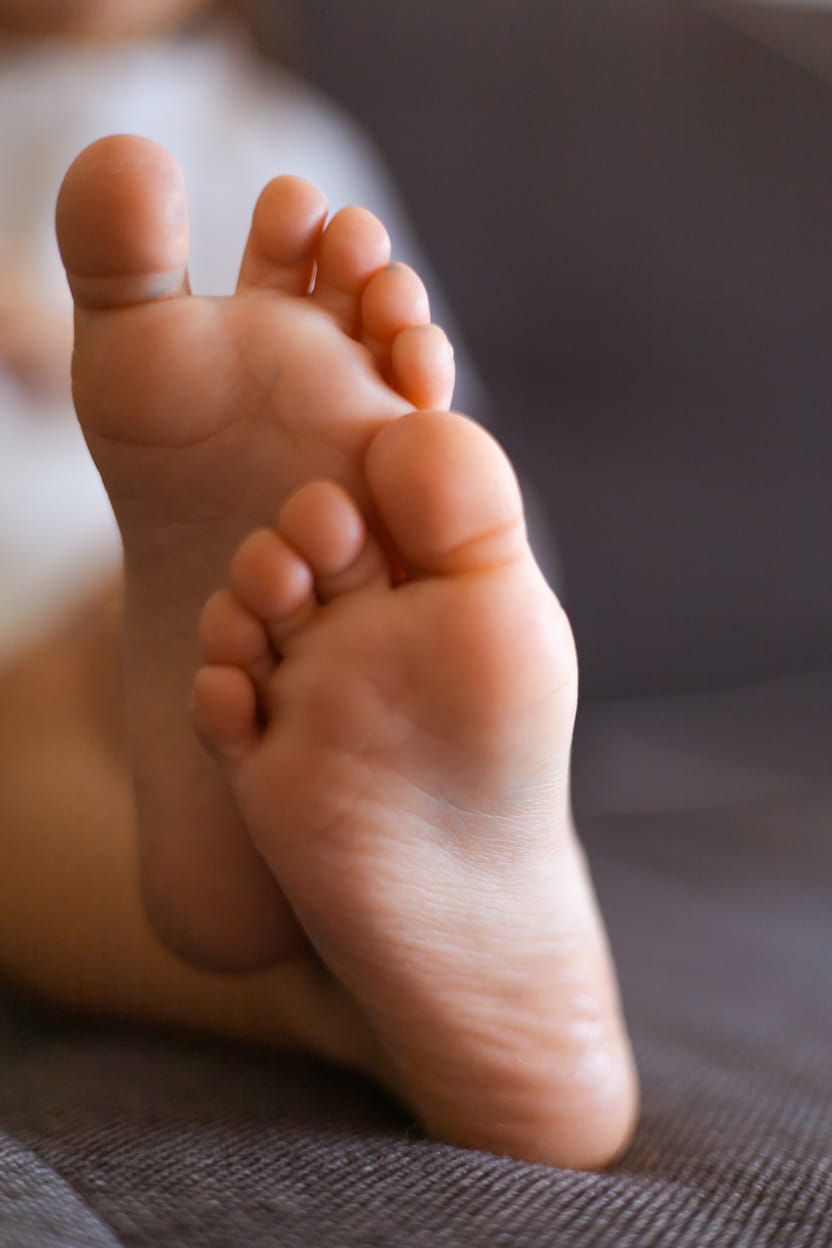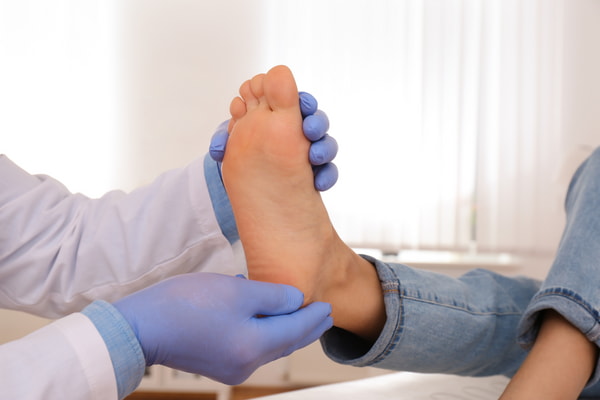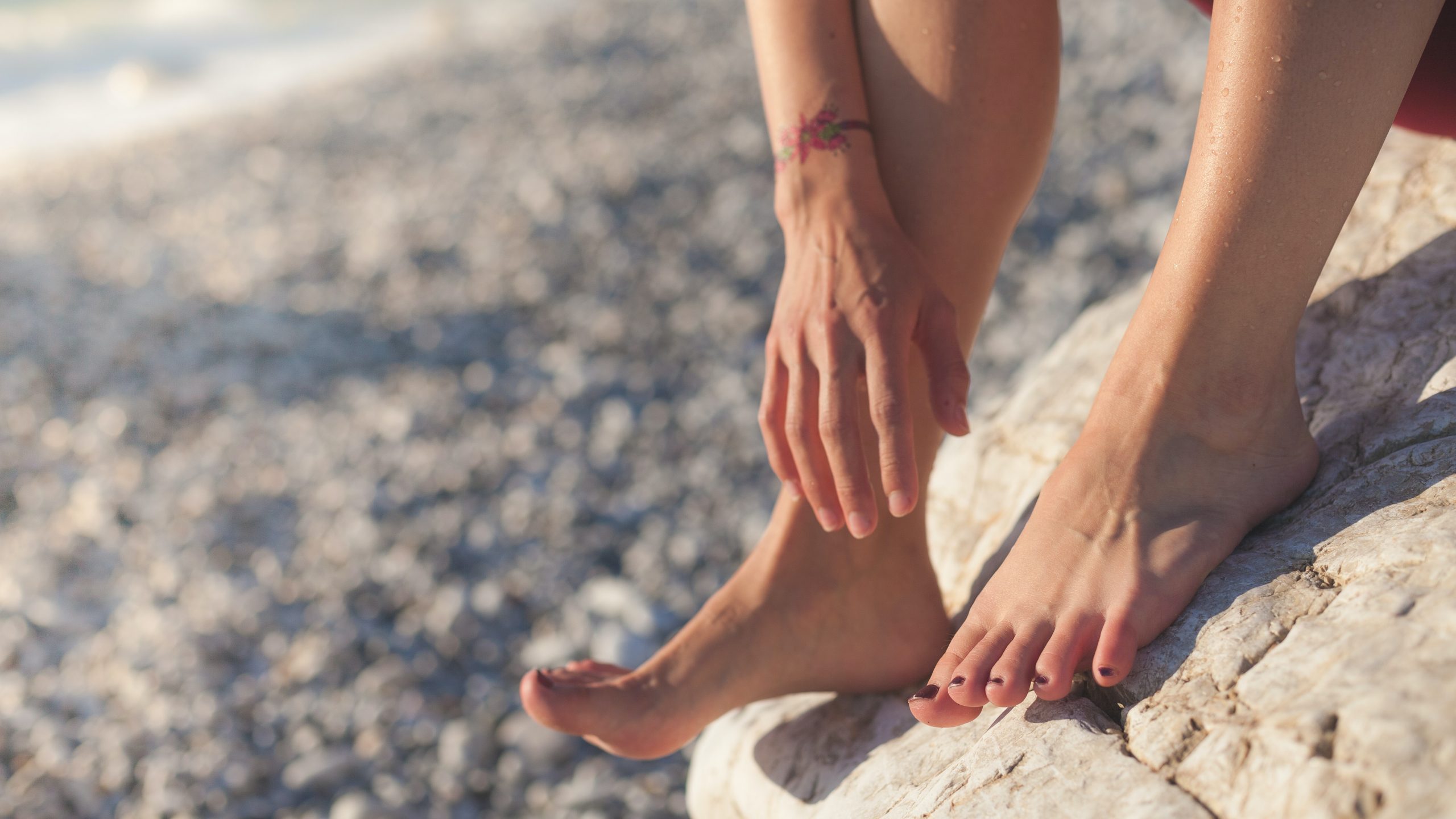Born to Run: The Case for Barefoot Running
"Born to Run" by Christopher Mcdougall explores the culture and science behind running. One of the most fascinating aspects of the book is the discussion around barefoot running and the potential benefits it can offer. Let's dive deeper into this book and the concept of barefoot running and its advantages.
The book presents a compelling argument that modern running shoes may be doing more harm than good. McDougall points out that running shoes have become increasingly cushioned and supportive over the years, leading to a reliance on footwear rather than the natural mechanics of the foot. He argues that our feet are designed to run barefoot, and that running shoes may actually be causing more injuries than they prevent.
According to the book, when we run in shoes, we tend to land on our heels, which can lead to an increased risk of injury. In contrast, when we run barefoot or in minimalist shoes, we tend to land on the forefoot or midfoot, which can reduce the impact on our joints and muscles. The book highlights the Tarahumara Indians, who run hundreds of miles in thin sandals or barefoot, as an example of how running without shoes can be effective.
Also discussed in the book is the importance of proper running form and how barefoot running can help improve it. Running barefoot forces us to adopt a more natural running form, which can lead to a more efficient and natural gait, and can reduce the risk of injury and improve overall performance.
McDougall also explores the idea that modern running shoes can lead to weaker foot muscles and a reduced ability to feel the ground beneath us. When we wear shoes with thick soles, we are less able to sense the terrain and make adjustments to our stride accordingly. Running barefoot, on the other hand, allows us to better connect with the ground and develop stronger foot muscles.
However, the book also acknowledges that transitioning to barefoot running should be done gradually and with caution. Running without shoes can put more stress on the feet and calves, which can increase the risk of injury if done too quickly or without proper preparation. The book advises starting with short distances and gradually building up to longer runs over time.
In conclusion, "Born to Run" provides a thought-provoking exploration of barefoot running and the potential benefits it can offer. By advocating for a more natural approach to running, the book challenges our assumptions about modern running shoes and encourages us to reconnect with our bodies and the environment around us. Whether you are an experienced runner or just starting out, this book should be next on your list!
For centuries, humans have been walking and running barefoot. It's how we evolved to move, and our feet are designed to perform in this way. However, with the advent of modern footwear, we have strayed away from our natural state, and it's had a significant impact on our feet and overall health.
Enter barefoot shoes. These shoes aim to mimic the feeling of walking barefoot while still providing some protection for the feet. They are designed to be flexible, lightweight, and have minimal cushioning to allow for the most natural foot movement possible.
But what makes barefoot shoes so unique? Let's take a look.

Improved Foot Health
One of the most significant benefits of wearing barefoot shoes is improved foot health. Traditional shoes often have rigid soles and elevated heels that change the way our feet interact with the ground. This can cause muscle imbalances, weaken the arches of our feet, and lead to issues like plantar fasciitis and bunions.
Barefoot shoes, on the other hand, encourage proper foot alignment and allow our feet to move in a more natural way. This can strengthen the muscles in our feet and lower legs and improve our overall foot health.
Better Balance and Stability
Barefoot shoes can also improve our balance and stability. When we walk or run barefoot, our feet have to work harder to stabilize our bodies. This strengthens the muscles in our feet and lower legs, which can improve our balance and reduce the risk of falls and other injuries.
Improved Proprioception
Proprioception is the ability to sense where our bodies are in space. When we wear traditional shoes, our feet are somewhat isolated from the ground, which can diminish our proprioceptive ability. Barefoot shoes, however, allow us to feel the ground beneath our feet and provide more feedback to our brains. This can improve our balance, coordination, and overall body awareness.
Better Running Form
Finally, barefoot shoes can help us run with better form. When we run in traditional shoes, we often land on our heels, which can cause a jarring impact with each stride. Barefoot shoes encourage a forefoot or midfoot strike, which can reduce the impact on our joints and improve our running efficiency.
Conclusion
Barefoot shoes are not just a trendy new shoe option. They offer significant benefits to our overall foot health and can help us move and perform better. If you're interested in trying barefoot shoes, start slowly and gradually increase the amount of time you wear them. It may take some time for your feet to adjust, but the benefits are well worth the effort.
Calzados Descalzos: ¿El Futuro del Calzado?
Durante siglos, los humanos han caminado y corrido descalzos. Es cómo evolucionamos para movernos y nuestros pies están diseñados para funcionar de esta manera. Sin embargo, con la llegada del calzado moderno, nos hemos alejado de nuestro estado natural y esto ha tenido un impacto significativo en nuestros pies y en nuestra salud en general.
Entren en juego los zapatos descalzos. Estos zapatos buscan imitar la sensación de caminar descalzos mientras brindan cierta protección para los pies. Están diseñados para ser flexibles, livianos y tener una amortiguación mínima para permitir el movimiento más natural posible del pie.
Pero, ¿qué hace que los zapatos desnudos sean tan únicos? Echemos un vistazo.

Mejora la Salud del Pie
Uno de los beneficios más significativos de usar zapatos descalzos es la mejora de la salud del pie. Los zapatos tradicionales a menudo tienen suelas rígidas y talones elevados que cambian la forma en que nuestros pies interactúan con el suelo. Esto puede causar desequilibrios musculares, debilitar los arcos de nuestros pies y conducir a problemas como la fascitis plantar y los juanetes.
Los zapatos descalzos, por otro lado, fomentan la alineación adecuada del pie y permiten que nuestros pies se muevan de manera más natural. Esto puede fortalecer los músculos de nuestros pies y piernas inferiores y mejorar nuestra salud general del pie.
Mejor Equilibrio y Estabilidad
Los zapatos descalzos también pueden mejorar nuestro equilibrio y estabilidad. Cuando caminamos o corremos descalzos, nuestros pies tienen que trabajar más para estabilizar nuestros cuerpos. Esto fortalece los músculos de nuestros pies y piernas inferiores, lo que puede mejorar nuestro equilibrio y reducir el riesgo de caídas y otras lesiones.
Mejora de La Propiocepcion
La propiocepción es la capacidad de sentir dónde están nuestros cuerpos en el espacio. Cuando usamos zapatos tradicionales, nuestros pies están algo aislados del suelo, lo que puede disminuir nuestra capacidad propioceptiva. Los zapatos desnudos, sin embargo, nos permiten sentir el suelo debajo de nuestros pies y proporcionar más retroalimentación a nuestros cerebros. Esto puede mejorar nuestro equilibrio, coordinación y conciencia corporal en general.
Mejor Forma de Correr
Finalmente, los zapatos descalzos pueden ayudarnos a correr con mejor forma. Cuando corremos con zapatos tradicionales, a menudo aterrizamos en nuestros talones, lo que puede causar un impacto violento con cada zancada. Los zapatos descalzos fomentan una zancada en la parte media o delantera del pie, lo que puede reducir el impacto en nuestras articulaciones y mejorar nuestra eficiencia de carrera.
Conclusion
Los zapatos descalzos no son solo una nueva opción de calzado de moda. Ofrecen beneficios significativos para nuestra salud general del pie y pueden ayudarnos a movernos y rendir mejor. Si estás interesado en probar los zapatos descalzos, comienza lentamente y aumenta gradualmente la cantidad de tiempo que los usas. Es posible que sus pies tarden un tiempo en adaptarse, pero los beneficios bien valen el esfuerzo.
Study shows increase of flat foot in children that wear shoes than those who don’t.
Barefoot Shoes and Bunions
If you’re suffering from bunions, wearing barefoot shoes may be the answer to your foot woes. Bunions are a common and painful condition in which the big toe joint becomes swollen and misaligned.
Wearing shoes that have too much cushioning can make this problem worse, as can high heels or tight-fitting footwear. That's why many people with bunions opt for barefoot shoes—they offer plenty of room for your toes to move naturally while still providing adequate protection against hard surfaces like pavement and concrete.
Barefoot shoes provide a number of benefits when it comes to managing bunions. First, they help promote natural foot movement by allowing your toes to spread out without restriction—this helps reduce pressure on the bunion area and provides relief from pain associated with the condition. Additionally, because there’s no arch support built into most barefoot shoes, they won't interfere with any orthotics you may need to wear. Finally, these types of footwear tend not to be very heavy so they won't place extra strain on already sore joints in your feet caused by bunions either.
In short, if you have bunions then investing in some quality barefoot shoes could make all difference when it comes to managing pain levels throughout the day. Not only do these types of shoe provide superior comfort but also encourage healthy foot movements that will help keep those pesky bunion problems at bay!
[vc_row][vc_column][vc_column_text]
Barefoot Shoes and Foot Health: A Study of Arch Stiffness
The human foot is a remarkable and complex structure that has evolved over thousands of years to provide stability, balance, and mobility. In recent years, the growing trend of barefoot shoes has led to a growing body of research into the benefits and drawbacks of this type of footwear. This article summarizes a recent study that investigated the effects of modern shoes and minimal footwear on the biomechanics of the human foot.
The study, which compared the arch stiffness of individuals who habitually wear minimal footwear to those who habitually wear conventional modern shoes, found that individuals who wear minimal footwear have stiffer arches both statically and dynamically. The researchers hypothesized that modern shoes reduce the role of foot muscles in maintaining arch stiffness, which can lead to arch collapse and flat foot in some individuals. In contrast, the relatively small foot muscles in conventionally-shod individuals could be related to features in their shoes that immobilize and protect the foot, such as restrictive toe boxes and raised arch supports.
While these findings are intriguing, the researchers caution that more research is needed to confirm the causality between footwear and foot biomechanics. Future research should target other foot muscles thought to be involved in maintaining arch stiffness, control for potential confounding factors such as genetic ancestry and physical activity levels, and determine the effects of specific features of modern shoes on foot biomechanics. Additionally, further work is needed to determine how the use of modern shoes affects foot function at different stages of development.
Despite the limitations of the study, the findings support the idea that the human foot is not entirely adapted for modern "conventional" shoes and that barefoot or minimal footwear may be more beneficial for foot health. While the use of modern shoes early in life may increase the risk of flat foot, the use of minimal footwear later in life may help treat the symptoms of flat foot by strengthening the foot muscles.
In conclusion, the study provides further evidence of the importance of foot biomechanics and the impact of footwear on foot health. While more research is needed to fully understand the relationship between footwear and foot biomechanics, the findings of this study suggest that barefoot or minimal footwear may be a healthier option for maintaining foot health and preventing foot problems.
Citations:
Holowka, N.B., Wallace, I.J. & Lieberman, D.E. Foot strength and stiffness are related to footwear use in a comparison of minimally- vs. conventionally-shod populations. Sci Rep 8, 3679 (2018). https://doi.org/10.1038/s41598-018-21916-7
[/vc_column_text][/vc_column][/vc_row]
Making the Switch to Barefoot Shoes
You’ve been thinking about it for a while, and now you’re ready to take the plunge! Congratulations on making a choice that will have a positive impact on your life and health. Now that you’re ready, you might be wondering, how can I switch shoe types gracefully? This is a great question, and although you might be excited about your new shoes, we suggest that you don’t quit your old shoes cold turkey. Logging many miles on your barefoot shoes right off the bat will leave you feeling sore and uncertain of your new upgrade. Easing into it is the best approach. Let us explain why.
Your lower legs, ankles, and feet have become lazy
Yes, you read that right. After years (probably your whole life) of shoes that offer great amounts of cushion and shock absorption, your muscles have not had to move in the ways they were designed to in a long time. This has made them less flexible and slightly weaker. Because of this, if you start wearing your new barefoot shoes everywhere, you’re not giving your feet time to build this muscle. To avoid pain or injury in the beginning, starting slow is best.
Your gait has become accustomed to the shoes that you are currently using
Your gait includes your posture, your stride, and overall how you move about in the world. Switching shoes means that this will change. Just like how you are going to give your feet, ankles and lower legs time to adjust and build up muscle, you might also be using different muscles more when your gait changes that need time to build themselves up as well. Again, making the switch slowly will give your body time to strengthen where it needs to, preventing pain and possible injury.
So now you understand why you should start slowly. But how should you execute this masterful switch? That is a great question, and we can help you with an actionable plan.
How do I make the switch?
We suggest that you start by wearing your shoes around the house. This will give your feet something familiar to land on that they might even be used to walking barefoot on already. Next, start going for short walks outside, slowly increasing to longer walks. When you feel comfortable with this, you can start going for jogs, and so on. This process will be true for any style of shoe you’re starting with, whether it’s a sandal, a casual wear shoe, or a running shoe. Start out small, and work your way up to wherever you want to land.
4 Reasons to Try Barefoot Shoes
Have you been thinking of giving minimal shoes a try? This movement (pun intended) of going back to our feet in natural form and letting them do their thing, has been catching on over the past 10 years. Shoes that offer a lot of padding, shock absorption, and shape are actually attempting to correct something that isn’t wrong! Your feet were made to carry you, and trying to change the way they are designed can cause permanent damage to not only your feet, but also your back, legs, and joints.
If you’re not yet convinced, here are some reasons why you should try minimal shoes that you may not have thought of yet.
1. You land more gently
When we wear shoes that have a lot of padding, we might be placing a lot of impact on one part of our foot, but our feet don’t signal to our brain as quickly that we need to land more softly. When we wear minimal shoes and our feet can feel the impact, we can understand where we might be having a greater impact than necessary as we run or walk. This allows us to efficiently adjust our stride to fix where we are hitting hard! So instead of striking our heel for an hour during our run, we can feel within minutes that we are striking our heel, and can fix this immediately.
2. It can strengthen your lower legs and feet
Wearing minimal shoes has been shown to increase plantar flexor strength. These are the muscles in your lower leg, ankle, and foot that help to control foot movement. Many endurance athletes focus on building strength here, so making the switch to minimal shoes can help this without the extra training.
3. Your balance can improve
As you hike, train, or generally move through life, your feet pass information to your brain about what you’re walking on! With a great amount of cushion below your feet, you can’t feel what’s underneath them. With a minimal shoe, you can feel this, allowing your feet to send those signals to the brain and, in turn, you can move more skillfully, while also improving your natural balance.
4. More comfort
With the wide toe, your feet have room to spread out and your toes aren’t pinched all day. You’ll get home after a long day and you won’t feel the need to kick off your shoes immediately when you walk through the door. What’s a better win than that?







